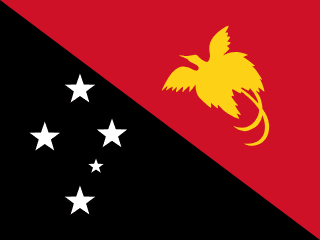Energy in Papua New Guinea

When it comes to Energy in Papua New Guinea, the Refined petroleum products exports is whereas, the Refined petroleum products imports is .
More about energy in Papua New Guinea
| Electricity | |
|---|---|
| Installed generating capacity | 1.148 million kW (2023 est.) |
| Consumption | 4.399 billion kWh (2023 est.) |
| Transmission/distribution losses | 328.234 million kWh (2023 est.) |
| Electricity access | |
| Electrification - total population | 19% (2022 est.) |
| Electrification - urban areas | 65.1% |
| Electrification - rural areas | 14.2% |
| Electricity generation sources | |
| Fossil fuels | 76.4% of total installed capacity (2023 est.) |
| Solar | 0.1% of total installed capacity (2023 est.) |
| Hydroelectricity | 21.2% of total installed capacity (2023 est.) |
| Geothermal | 2% of total installed capacity (2023 est.) |
| Biomass and waste | 0.3% of total installed capacity (2023 est.) |
| Coal | |
| Imports | 2,000 metric tons (2023 est.) |
| Petroleum | |
| Total petroleum production | 32,000 bbl/day (2023 est.) |
| Refined petroleum consumption | 30,000 bbl/day (2023 est.) |
| Crude oil estimated reserves | 159.656 million barrels (2021 est.) |
| Refined petroleum products - production | |
| Refined petroleum products - exports | |
| Refined petroleum products - imports | |
| Natural gas | |
| Production | 11.57 billion cubic meters (2023 est.) |
| Consumption | 677.736 million cubic meters (2023 est.) |
| Exports | 10.892 billion cubic meters (2023 est.) |
| Proven reserves | 183.125 billion cubic meters (2021 est.) |
All Important Facts about Papua New Guinea
Want to know more about Papua New Guinea? Check all different factbooks for Papua New Guinea below.
-
 Papua New Guinea Factbook
Papua New Guinea Factbook
-
 The Economy of Papua New Guinea
The Economy of Papua New Guinea
-
 Learn about the Government of Papua New Guinea
Learn about the Government of Papua New Guinea
-
 Communication in Papua New Guinea
Communication in Papua New Guinea
-
 Popular Universities in Papua New Guinea
Popular Universities in Papua New Guinea
-
 Enerny in Papua New Guinea
Enerny in Papua New Guinea
-
 Transport in Papua New Guinea
Transport in Papua New Guinea
-
 The Geography and society of Papua New Guinea
The Geography and society of Papua New Guinea
-
 The Environment of Papua New Guinea
The Environment of Papua New Guinea
-
 Military and security in Papua New Guinea
Military and security in Papua New Guinea